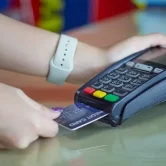Corona pandemic and the decline in cash

Mini UK coronavirus outbreaks have been prominent across news outlets in the last fortnight and only a few days ago lockdown measures have been reintroduced in Preston. The thought behind this is that small ”waves” are caused by the inability to completely eradicate the first epidemic, and not proof of a second wave, according to various experts. It leaves a lot of uncertainly and businesses are having to implement changes to support this.
Substantial fall in cash withdrawals post lockdown
It was reported last week that there was still about 11 million cash withdrawals being made each week, but after recent measures, the UK has seen a substantial fall of 60% in the number of cash withdrawals from ATM machines, although when people are making cash withdrawals these figures are now larger than previously so it appears people may now be adopting a hoarding approach to cash. One concern that is frequently highlighted is the concerns shoppers have handling cash merely because they are not sure who has come into contact with it previously.
How are spending habits changing post lockdown?
During the COVID-19 outbreak and subsequent lockdown, we have seen the way people alter their behaviors when it comes to paying for goods and services, whether this is a simple trip to the local garage to purchase fuel or purchasing stock for their business.
As we come out the other side of lockdown and try to recapture a degree of normality, we’re likely to see an increase in purchases and debit and credit card transactions. Therefore, these changes can support in stemming the spread of the virus if people are cognizant of which payment methods are the most hygienic and safe.
Reducing cash usage
To protect the health of their staff, business owners have been encouraged to reduce the amount of cash being handled by their staff and employees with the ultimate goal to help reduce and stem the spread germs from person to person. Instead, they should have the option to pay using contactless technology wherever possible with the more traditional Chip and PIN method in close proximity whilst ensuring there is an infrastructure for regular disinfecting of keypads, and contactless card payments.
Cleaning payment equipment after the pandemic
Card payments have become an integral way to pay for items during the pandemic, many banks and card schemes have already put measures in place to support their use by increasing the contactless payment limit from £30 to £45, although it may take time for all retailers and card schemes to fully transition to this increase.
Like any other technological hardware devices, a credit card machine is not immortal, and with so much uncertainty globally during these uncertain times, business owners are now consciously having to implement ways to protect themselves & their staff from cross contamination with their payment hardware. The pandemic has provided unforeseen challenges for many business owners and many are having to implement ways to support their client base and staff.
A good way to keep your card machine clean of bacteria is to encourage contactless payments whilst eliminating any physical contact for customers. Whilst we know that isn’t always possible, it is strongly advised. Credit card machines although robust still remain delicate underneath their surface. Debris and every day dirt and grime that slip through the cracks between PIN pad buttons can mess with the payment software, causing sudden or gradual issues.
Also the card slot where you insert debit or credit cards for the traditional Chip & PIN transaction can accumulate dirt particles inside, which can have an impact with the card reading technology. Therefore, keeping your credit card machine spotless helps to prolong its life. If you do decide to clean any point of sale hardware always follow the manufacturer’s advice and never spray any liquid directly on to a payment card machine as it can have a detrimental consequence with the mechanical components of the payment terminal. Whether you’re using a disposable wipe or reusable cloth, ensure it isn’t so moist it can leave droplets of liquid on the terminal’s surface.
Many of the payment innovations introduced in the last decade have been with the sole intention of enhancing customers’ experience and reducing cash transactions, and the pandemic has only seen this imitative go from strength to strength. Despite less cash transactions materialising, until recently there was an element who still liked the convenience they felt cash provided, whilst emphasising the benefits to helping budget management and then there are some who like the anonymity a cash transaction can provide.
What are your experiences from the last four months both as a business owner and a customer? Please let us know your feedback or email us sales@wirelessterminalsolutions.co.uk





